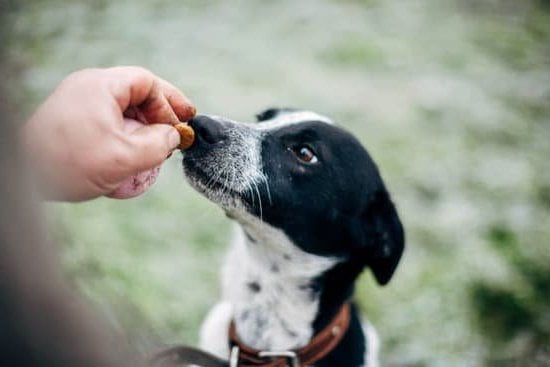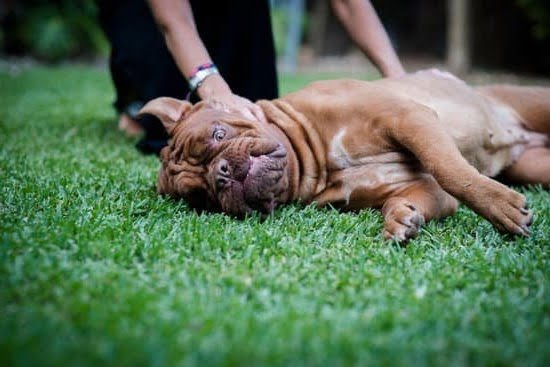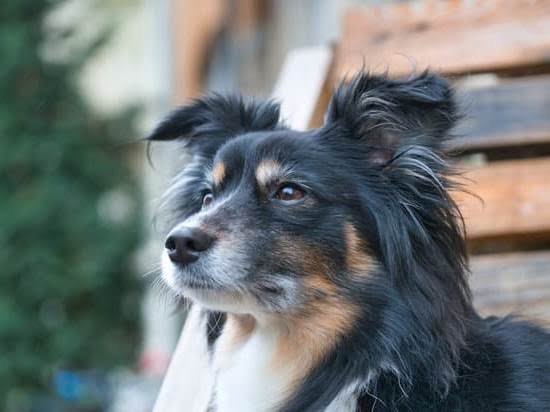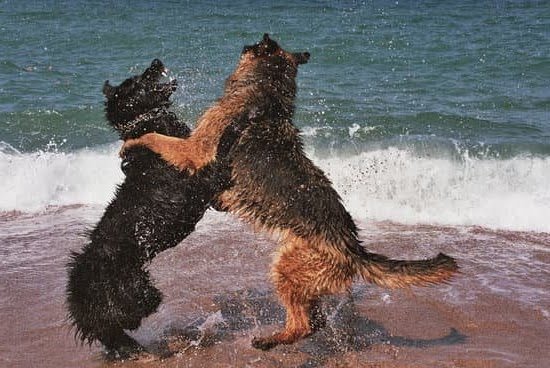If you’re wondering how to do scent training with your dog, you’ve come to the right place. Scent training is a fun and rewarding activity that can provide mental stimulation, improve obedience, and strengthen the bond between you and your furry friend. In this article, we’ll explore the basics of scent training, from choosing the right dog for the job to advanced techniques and troubleshooting common challenges.
Scent training involves teaching your dog to use their sense of smell to locate specific scents or items. Whether you want to train your pup for search and rescue work, hunting, or simply for fun, scent training can offer numerous benefits for both you and your canine companion.
In the following sections, we’ll cover everything you need to know about getting started with scent training, including choosing the right dog breed, selecting the necessary supplies and equipment, teaching basic scenting skills, and advancing to more complex exercises. Additionally, we’ll discuss how to apply scent training to real-life scenarios and provide tips for maintaining your dog’s skills over time.
Get ready to embark on an exciting journey into the world of scent training with your four-legged friend.
Choosing the Right Dog for Scent Training
When it comes to scent training, choosing the right dog for the job is essential. Certain breeds are naturally better at scent work, and individual temperament plays a crucial role in a dog’s ability to excel in this type of training. Understanding these considerations will help set you and your furry friend up for success in scent training.
Breed Considerations
Some dog breeds have been specifically bred for their exceptional sense of smell and are more inclined to excel in scent training. Breeds such as Bloodhounds, Beagles, German Shepherds, and Labrador Retrievers are known for their superior scenting abilities. However, this does not mean that other breeds cannot succeed in scent work. Any dog with a naturally strong sense of smell and a willingness to work can be trained for scent detection.
Temperament Considerations
In addition to breed tendencies, a dog’s individual temperament is an important factor to consider when choosing a candidate for scent training. Dogs that are curious, persistent, and highly focused tend to do well in this type of work. They should also exhibit a good level of trainability and enthusiasm for learning new tasks. It’s essential to assess your dog’s personality and behavior before embarking on scent training to ensure they have the right qualities for success.
Consideration should also be given to your own experience with dogs and training as certain breeds may be more challenging or demanding when it comes to learning scent detection skills. Ultimately, with patience, consistency, and the right approach, many dogs can become proficient in scent work regardless of their breed or temperament.
Training Supplies and Equipment
Scent training with your dog can be a fun and rewarding activity for both you and your furry friend. To get started, you’ll need the right supplies and equipment to facilitate the training process. Here’s a list of items you’ll need to begin scent training with your dog:
- Scented objects or materials: This could include essential oils, scented cloths, or specific items with distinct odors that will be used during training exercises.
- Training aids: Consider investing in tools such as scent detection kits, target odors, or scent boxes to help guide your dog through the training process.
- Treats or rewards: It’s important to have a supply of your dog’s favorite treats or rewards on hand to reinforce positive behavior during scent training sessions.
- Leash and collar: A sturdy leash and collar are essential for guiding your dog during training exercises, especially when practicing outdoor scent work.
In addition to these basic supplies, you may also want to consider enrolling in a scent training class or seeking guidance from a professional trainer who specializes in this type of activity. They can provide valuable insight and recommendations for additional equipment that may be beneficial for your specific training goals.
When selecting your training supplies and equipment, it’s crucial to prioritize safety and comfort for your dog. Choose high-quality tools and materials that are suitable for your dog’s size, age, and breed. With the right supplies in hand, you’ll be well-prepared to initiate the scent training journey with your canine companion.
The First Steps
Scent training is an engaging and rewarding activity that can strengthen the bond between you and your dog while also tapping into their natural abilities. When starting with scent training, it’s crucial to lay a solid foundation by teaching your dog to focus on scent. Here are the essential steps to get started:
- Understand the Basics: Before diving into scent training, it’s important to understand how a dog’s sense of smell works. Dogs have an incredibly powerful sense of smell, with up to 300 million olfactory receptors in their noses, compared to about six million in humans. This means that they are capable of detecting scents at extremely low concentrations.
- Establish Focus: The first step in teaching your dog to focus on scent is establishing their concentration and attention. Begin by using high-value treats or toys to encourage your dog to pay attention to a specific scent or object. Start in a quiet environment free from distractions, so your dog can concentrate fully on the task at hand.
- Introduce Scent Objects: Once your dog has mastered focusing on high-value treats or toys, you can introduce specific scent objects for them to focus on. These can be items such as essential oils, herbs, or even truffle oil for more advanced training. Encourage your dog to sniff out these objects and reward them generously when they do so successfully.
By taking these initial steps to teach your dog to focus on scent, you will establish a strong foundation for more advanced scent training exercises down the line. Always remember to be patient and consistent with your training efforts, as each dog progresses at their own pace.
Basic Scent Training Exercises
Introducing the Scent
The first step in basic scent training is to introduce your dog to the specific scent you want them to learn to identify. This could be anything from a particular type of essential oil to a specific item like a piece of clothing or a toy. Start by allowing your dog to sniff the scent while offering treats or praise to create a positive association.
Scent Discrimination
Once your dog is familiar with the target scent, you can begin working on scent discrimination exercises. This involves presenting your dog with multiple containers, only one of which contains the target scent. Encourage your dog to use their nose to identify and indicate the container that holds the desired scent.
Increasing Difficulty
As your dog becomes more proficient at identifying the target scent, you can increase the difficulty of the exercises. This can involve hiding the scented object in different locations, adding distractions, or incorporating additional scents for discrimination tasks. Varying the difficulty will help keep your dog engaged and continue developing their scenting skills.
By incorporating these basic scent training exercises into your dog’s routine, you can help them develop a valuable skill set that has practical applications in various fields. Training sessions should be kept short and fun to maintain your dog’s motivation and enjoyment throughout the process. With consistent practice and patience, you’ll be amazed at how quickly your dog’s scenting abilities will progress.
Advanced Scent Training Techniques
Once your dog has mastered the basic scent training exercises, it’s time to take their skills to the next level with more advanced techniques. One way to do this is by introducing more complex scent puzzles or using a variety of containers to expand their search capabilities. This will further challenge your dog and help them become even more proficient in identifying and locating specific scents.
Another advanced technique is known as “scent discrimination,” where dogs are trained to differentiate between similar scents. This can be particularly useful in real-life scenarios where your dog needs to identify and alert you to a specific smell, such as differentiating between safe and harmful substances.
In addition, introducing distractions during scent training can help your dog learn to focus on the task at hand despite any competing smells or noises. This can be achieved by gradually increasing distractions in the training environment, teaching your dog to stay focused on the target scent regardless of what else is around.
Ultimately, advanced scent training techniques not only enhance your dog’s scenting abilities but also strengthen the bond between you and your furry companion. These techniques provide mental stimulation for your pet and can be a rewarding experience for both of you.
| Advanced Scent Training Techniques | Description |
|---|---|
| Scent Discrimination | Teaching dogs to differentiate between similar scents |
| Introducing Distractions | Gradually increasing distractions in the training environment |
| Complex Scent Puzzles | Using a variety of containers to expand search capabilities |
Incorporating Real-Life Scenarios
Once your dog has developed a strong foundation in scent training, it’s time to take their skills to the next level by incorporating real-life scenarios. This is where the true value of scent training shines, as it allows your dog to use their natural abilities for practical purposes. Whether it’s search and rescue, tracking lost items, or detecting specific scents in different environments, applying scent training to real-life situations can be incredibly valuable.
One important aspect of incorporating real-life scenarios into scent training is to gradually increase the complexity of the tasks. Start with simple exercises in controlled environments and gradually introduce more challenging situations. This will help your dog build confidence and develop problem-solving skills as they apply their scenting abilities to practical uses.
In addition to search and rescue work, scent training can also be applied to everyday activities such as finding hidden objects or identifying specific scents in different settings. By integrating scent training into daily routines, you can keep your dog engaged and mentally stimulated while reinforcing their scenting skills. It’s important to remember that every dog is unique, so be patient and observant as you introduce real-life scenarios into their scent training regimen.
| Real-Life Scenario | Application |
|---|---|
| Search and Rescue | Tracking missing persons or animals |
| Everyday Activities | Finding hidden objects or identifying specific scents |
Troubleshooting Common Challenges
One of the common challenges that dog owners face in scent training is disinterest or lack of motivation from their furry companions. Not all dogs are naturally inclined to engage in scent training, and some may require extra encouragement to participate.
To overcome this obstacle, it’s important to make the training sessions fun and rewarding for your dog. Incorporating their favorite toys or treats can help in capturing their interest and motivating them to actively participate in the training process.
Another challenge that may arise during scent training is the difficulty in transitioning from simple exercises to more advanced techniques. Some dogs may struggle with moving on to complex scenting tasks, especially if they have not mastered the basics.
In such cases, it’s crucial to go back to the fundamentals and reinforce the foundation of their scent training skills before progressing to more challenging activities. Patience and consistency are key when addressing this obstacle, as pushing your dog too quickly may result in frustration for both the owner and the pet.
In some instances, distractions can pose a significant challenge during scent training. Dogs have an incredibly keen sense of smell, which means they can easily be distracted by other scents in their environment. This can be particularly challenging when trying to train your dog in public places or areas with high levels of olfactory stimulation.
To overcome this obstacle, gradually introduce distractions into your training sessions and work on building your dog’s focus amidst different smells. Additionally, using positive reinforcement techniques can help redirect your dog’s attention back to the intended scent during training exercises in distracting environments.
Maintaining and Practicing Scent Training
Scent training is a valuable skill for dogs to learn, and once you have successfully taught your furry friend the basics and advanced techniques, it is important to maintain and practice these skills over time. Consistent practice not only helps your dog retain their scenting abilities but also provides mental stimulation and enrichment. Just like any other skill, regular practice is essential for maintaining proficiency.
To keep up with your dog’s scent training skills over time, incorporate scent work into your daily routine. This can include hiding treats or toys around the house for your dog to find, or setting up more complex scent trails in your yard or local park. Regular practice sessions can be both fun and rewarding for your dog, while allowing them to continue honing their natural abilities.
Additionally, consider joining scent work classes or clubs in your area to provide opportunities for structured training and regular practice sessions with other dogs. These classes often offer unique challenges that can help maintain and even enhance your dog’s scenting skills.
Moreover, they provide a supportive environment for both you and your dog to continue improving in the long run. Remember that consistency is key when maintaining and practicing scent training – so make sure to schedule regular training sessions to keep up with your dog’s progress over time.
Conclusion
In conclusion, scent training with your dog can be an incredibly rewarding experience for both you and your furry friend. Not only does it tap into their natural instincts and abilities, but it also provides mental stimulation and a sense of accomplishment for them. Additionally, the bond that is formed between you and your dog through the training process is truly special and can strengthen your relationship in lasting ways.
To ensure success in the long run, it’s important to remain patient and consistent in your training efforts. Remember that every dog learns at their own pace, so it’s essential to celebrate small victories along the way.
Furthermore, incorporating scent training into your regular routine will help maintain and strengthen your dog’s skills over time. Whether it’s through daily exercises or real-life scenarios, continuing to practice scent training will benefit your dog’s overall well-being and happiness.
Ultimately, the rewards of scent training extend beyond just honing your dog’s skills. It also provides a great opportunity for you to bond with your pet, gain a deeper understanding of their behavior, and witness their incredible capabilities firsthand.
So whether you’re getting started with a new puppy or looking to engage an older dog in a fun activity, embracing scent training can be a fulfilling journey that brings joy and enrichment to both you and your canine companion.
Frequently Asked Questions
How to Do Scent Training With Dog?
Scent training with your dog involves teaching them to recognize and locate a specific scent, often using treats or toys as rewards. Start by introducing the scent to your dog and rewarding them when they show interest in it.
Then, gradually increase the difficulty by hiding the scent in different locations for your dog to find. Consistent practice and positive reinforcement are key to successful scent training.
How Can I Do Scent Work With My Dog at Home?
You can do scent work with your dog at home by starting with simple games like hiding treats around the house for them to find using their sense of smell.
As your dog gets better at finding hidden items, you can introduce more challenging activities such as hiding scented objects or even playing hide and seek with a family member while your dog uses their sense of smell to track them down.
How Do I Train My Dog to Track His Scent?
To train your dog to track their own scent, start by getting them familiar with the smell of one of their favorite toys or treats. Then, begin by having them search for the scented item in an open area before gradually making the game more complex by increasing the distance and adding obstacles for them to navigate while following their own scent trail.
With patience and practice, your dog can learn to track their own scent with ease.

Welcome to the blog! I am a professional dog trainer and have been working with dogs for many years. In this blog, I will be discussing various topics related to dog training, including tips, tricks, and advice. I hope you find this information helpful and informative. Thanks for reading!





